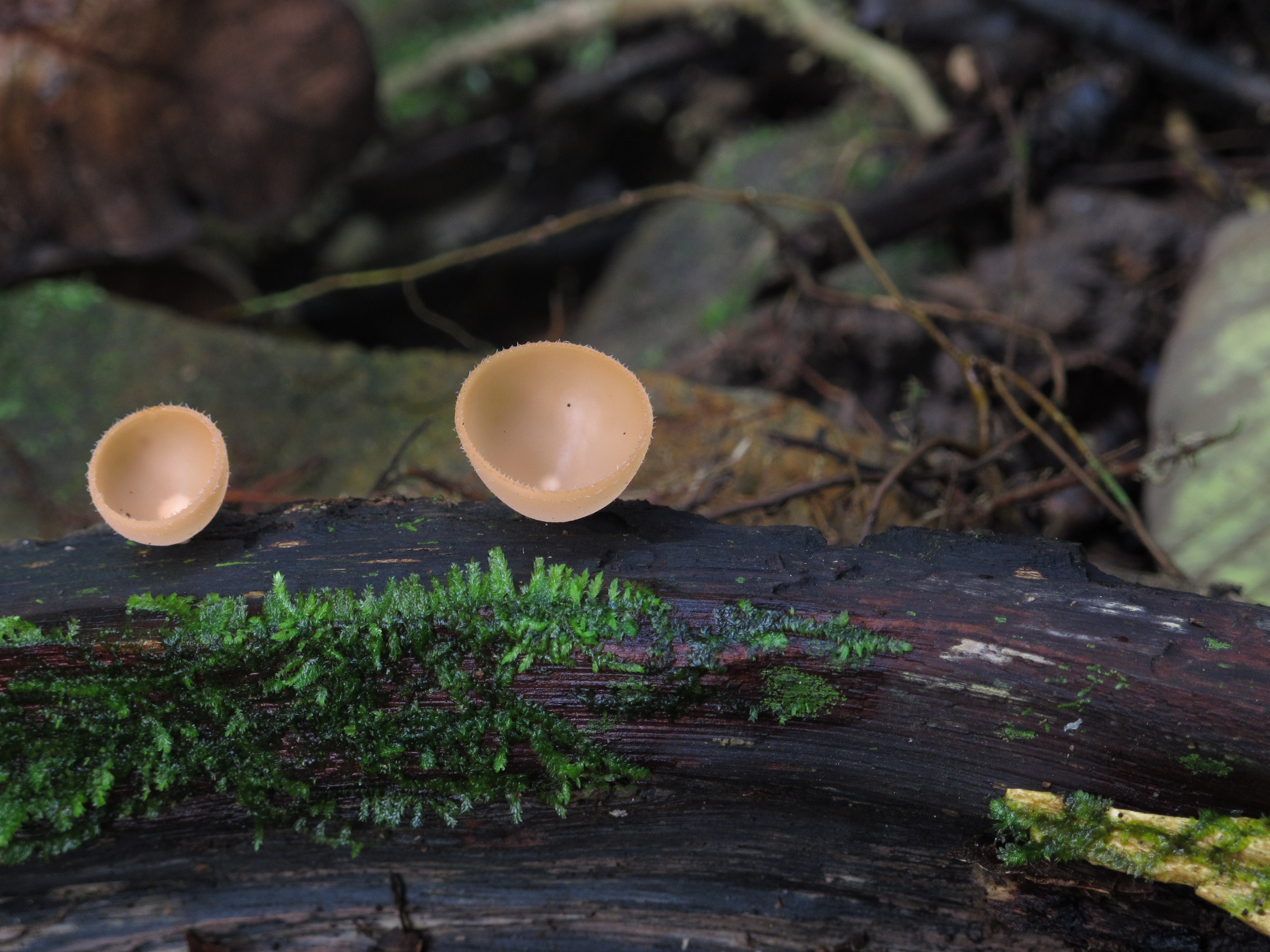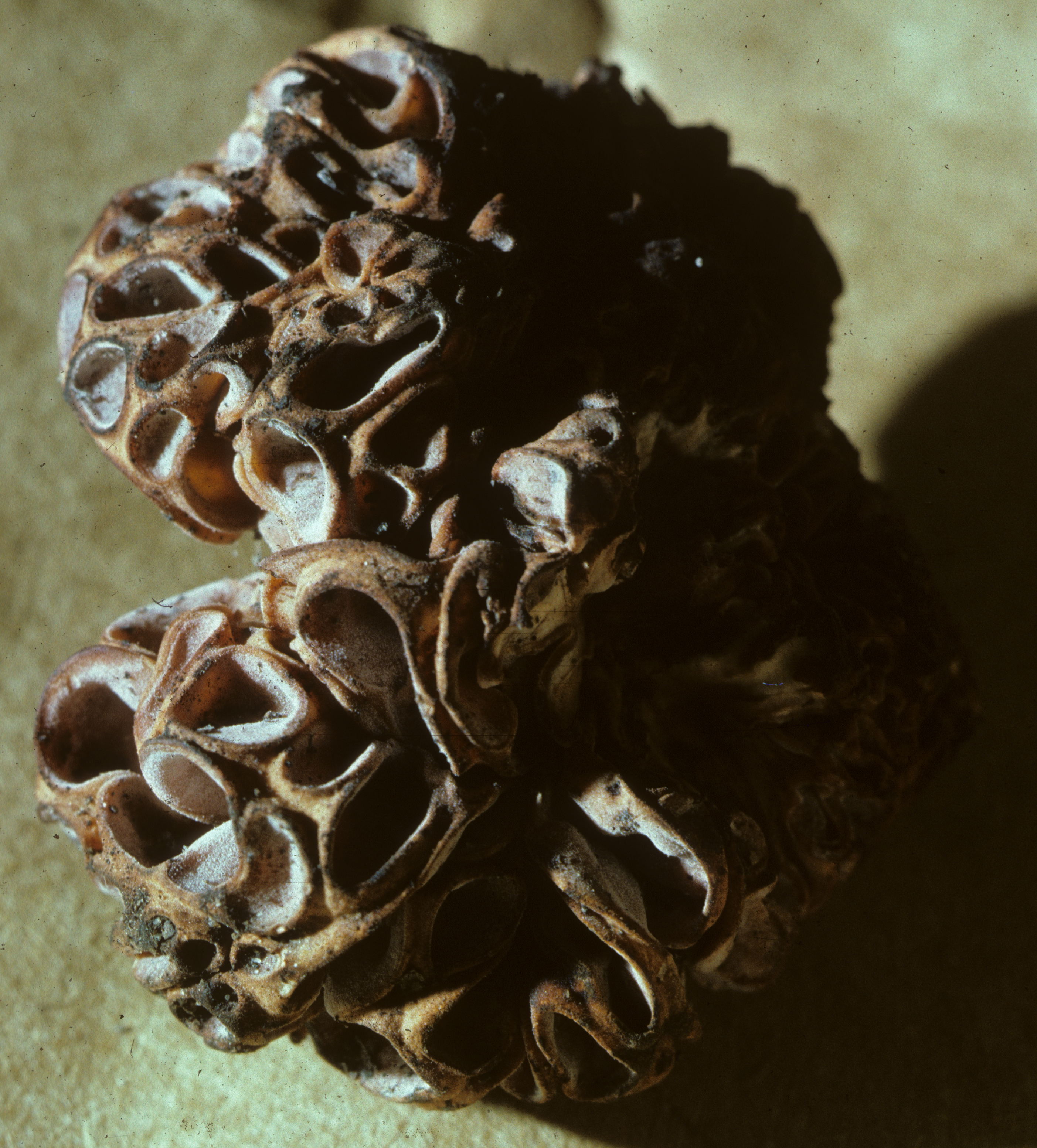|
Sarcoscyphaceae
The ''Sarcoscyphaceae'' are a family of cup fungi in the order Pezizales. Members of the Sarcoscyphaceae are cosmopolitan in distribution, found in both tropical and temperate regions. Genera A 2008 estimate placed 13 genera and 102 species in the family: * '' Aurophora'' Rifai 1968 * ''Cookeina'' Kuntze 1891 * '' Geodina'' Denison 1965 * '' Kompsoscypha'' Pfister 1989 * '' Microstoma (fungus)'' Bernstein 1852 * '' Nanoscypha'' Denison 1972 * ''Phillipsia'' Berk. 1881 * '' Pithya'' Fuckel 1870 * '' Pseudopithyella'' Seaver 1928 * ''Sarcoscypha ''Sarcoscypha'' is a genus of ascomycete fungus and type genus of the family Sarcoscyphaceae. Species of ''Sarcoscypha'' are present in Europe, North America and tropical Asia. They are characterised by a cup-shaped apothecium which is often bri ...'' (Fr.) Boud. 1885: anamorphs are ''Molliardiomyces'' Paden 1984 * '' Thindia'' Korf & Waraitch 1971 * '' Wynnea'' Berk. & M.A. Curtis 1867 References {{Taxonbar, from=Q2193232 Asco ... [...More Info...] [...Related Items...] OR: [Wikipedia] [Google] [Baidu] |
Sarcoscypha Coccinea
''Sarcoscypha coccinea'', commonly known as the scarlet elf cup, scarlet elf cap, or the scarlet cup, is a species of fungus in the family Sarcoscyphaceae of the order Pezizales. The fungus, widely distributed in the Northern Hemisphere, has been found in Africa, Asia, Europe, North and South America, and Australia. The type species of the genus ''Sarcoscypha'', ''S. coccinea'' has been known by many names since its first appearance in the scientific literature in 1772. Phylogenetic analysis shows the species to be most closely related to other ''Sarcoscypha'' species that contain numerous small oil droplets in their spores, such as the North Atlantic island species ''Sarcoscypha macaronesica, S. macaronesica''. Due to similar physical appearances and sometimes overlapping distributions, ''S. coccinea'' has often been confused with ''Sarcoscypha occidentalis, S. occidentalis'', ''Sarcoscypha austriaca, S. austriaca'', and ''Sarcoscypha dudleyi, S. du ... [...More Info...] [...Related Items...] OR: [Wikipedia] [Google] [Baidu] |
Cookeina
''Cookeina'' is a genus of cup fungi in the family Sarcoscyphaceae, members of which may be found in tropical and subtropical regions of the world. Species may be found on fallen branches of angiosperms, trunks, and sometimes on fruits.Weinstein RN, Pfister DH, Iturriaga T. (2002). A phylogenetic study of the genus ''Cookeina''. ''Mycologia'' 94(4): 673–682. The Temuans of Peninsular Malaysia are reported to use certain species from this genus as food, and also as a bait for fishing, where it is rubbed against the hook. Description Species in the ''Cookeina'' have a deep, cup-shaped to funnel-shaped fruiting bodies, or apothecia. The inner spore-bearing surface of the apothecium, the hymenium, is brightly colored, yellow to red, although the color will fade upon drying. The outer surface is less brightly colored. The excipulum, the tissue making up the walls of the apothecium, is thin and flexible. When hairs are present on the apothecium, they are fasciculate—made of bundles ... [...More Info...] [...Related Items...] OR: [Wikipedia] [Google] [Baidu] |
Sarcoscyphaceae
The ''Sarcoscyphaceae'' are a family of cup fungi in the order Pezizales. Members of the Sarcoscyphaceae are cosmopolitan in distribution, found in both tropical and temperate regions. Genera A 2008 estimate placed 13 genera and 102 species in the family: * '' Aurophora'' Rifai 1968 * ''Cookeina'' Kuntze 1891 * '' Geodina'' Denison 1965 * '' Kompsoscypha'' Pfister 1989 * '' Microstoma (fungus)'' Bernstein 1852 * '' Nanoscypha'' Denison 1972 * ''Phillipsia'' Berk. 1881 * '' Pithya'' Fuckel 1870 * '' Pseudopithyella'' Seaver 1928 * ''Sarcoscypha ''Sarcoscypha'' is a genus of ascomycete fungus and type genus of the family Sarcoscyphaceae. Species of ''Sarcoscypha'' are present in Europe, North America and tropical Asia. They are characterised by a cup-shaped apothecium which is often bri ...'' (Fr.) Boud. 1885: anamorphs are ''Molliardiomyces'' Paden 1984 * '' Thindia'' Korf & Waraitch 1971 * '' Wynnea'' Berk. & M.A. Curtis 1867 References {{Taxonbar, from=Q2193232 Asco ... [...More Info...] [...Related Items...] OR: [Wikipedia] [Google] [Baidu] |
Sarcoscypha
''Sarcoscypha'' is a genus of ascomycete fungus and type genus of the family Sarcoscyphaceae. Species of ''Sarcoscypha'' are present in Europe, North America and tropical Asia. They are characterised by a cup-shaped apothecium which is often brightly coloured. They have had a range of popular uses, one of which was as a table decoration. Some members of the family such as ''S. coccinea'' and the - according to new knowledge - more common ''S. austriaca'' in western Europe and United States have bright scarlet apothecia which have given them familiar names such as the scarlet cup fungus and scarlet elf cap. The name comes from the Greek ''skyphos'' meaning ''drinking bowl''. Anamorphic forms were given the genus name, ''Molliardiomyces'', but with single name nomenclature in fungi, the latter name is considered a synonym and no longer used. Description Species in ''Sarcoscypha'' have cup-shaped fruiting bodies (apothecia) that are typically colored bright red or yellow, although ... [...More Info...] [...Related Items...] OR: [Wikipedia] [Google] [Baidu] |
Geodina
''Geodina'' is a genus of fungi in the family Sarcoscyphaceae. This genus contains two species: ''Geodina guanacastensis'', found in Costa Rica, and ''Geodina salmonicolor'', found in the Dominican Republic The Dominican Republic ( ; es, República Dominicana, ) is a country located on the island of Hispaniola in the Greater Antilles archipelago of the Caribbean region. It occupies the eastern five-eighths of the island, which it shares wit .... References External links *Geodina' at Index Fungorum {{Taxonbar, from=Q5533999 Sarcoscyphaceae ... [...More Info...] [...Related Items...] OR: [Wikipedia] [Google] [Baidu] |
Wynnea
''Wynnea'' is a genus of fungi in the family Sarcoscyphaceae. Circumscribed by Miles Joseph Berkeley and Moses Ashley Curtis in 1867, the genus contains seven species that have ear-shaped fruit bodies that grow on the ground. ''Wynnea'' species have a worldwide distribution and have been collected from the United States, Costa Rica, India, and China. Taxonomy The genus ''Wynnea'' was circumscribed by English naturalist Miles Joseph Berkeley in 1867 to accommodate the species ''Wynnea gigantea'' and ''Peziza macrotis''. The former specimen was collected by Botteri near Orizaba, Mexico, and the latter had been described by Berkeley in his ''Journal of Botany and Kew Garden Miscellany'' (1851) Both species were subsequently illustrated in Cooke's ''Micrographia''. No other collections of ''Wynnea'' were reported for several decades, and in Pier Andrea Saccardo's ''Sylloge'', the genus was reduced to synonymy with the genus '' Midotis''. American mycologist Roland Thaxter describe ... [...More Info...] [...Related Items...] OR: [Wikipedia] [Google] [Baidu] |
Thindia
''Thindia'' is a genus of fungi in the family Sarcoscyphaceae. This is a monotypic genus, containing the single species ''Thindia cupressi'', found in Uttar Pradesh Uttar Pradesh (; , 'Northern Province') is a state in northern India. With over 200 million inhabitants, it is the most populated state in India as well as the most populous country subdivision in the world. It was established in 1950 ..., India. References External links *Thindia' at Index Fungorum {{Taxonbar, from=Q7784314 Sarcoscyphaceae Monotypic Ascomycota genera ... [...More Info...] [...Related Items...] OR: [Wikipedia] [Google] [Baidu] |
Pseudopithyella
''Pseudopithyella'' is a genus of fungi in the family Sarcoscyphaceae. There are two species in the genus, which have a widespread distribution. ''Pseudopithyella'' was circumscribed by Fred Jay Seaver Fred Jay Seaver (14 March 1877 – 21 December 1970) was an American mycologist. He worked at the New York Botanical Garden for 40 years, initially as the Director of Laboratories (1908–1911), then as the Curator (1912–1943), and finally as Hea ... in 1928. References External links * Pezizales genera Sarcoscyphaceae {{Pezizomycetes-stub ... [...More Info...] [...Related Items...] OR: [Wikipedia] [Google] [Baidu] |
Pezizales
The Pezizales are an order of the subphylum Pezizomycotina within the phylum Ascomycota. The order contains 16 families, 199 genera, and 1683 species. It contains a number of species of economic importance, such as morels, the black and white truffles, and the desert truffles. The Pezizales can be saprobic, mycorrhizal, or parasitic on plants. Species grow on soil, wood, leaves and dung. Soil-inhabiting species often fruit in habitats with a high pH and low content of organic matter, including disturbed ground. Most species occur in temperate regions or at high elevation. Several members of the Sarcoscyphaceae and Sarcosomataceae are common in tropical regions. Description Members of this order are characterized by asci that typically open by rupturing to form a terminal or eccentric lid or operculum. The ascomata are apothecia or are closed structures of various forms derived from apothecia. Apothecia range in size from less than a millimeter to approximately 15 cm, and ... [...More Info...] [...Related Items...] OR: [Wikipedia] [Google] [Baidu] |
Pithya
''Pithya'' is a genus of fungi in the family Sarcoscyphaceae. There are five species in the genus, which are widespread in northern temperate In geography, the temperate climates of Earth occur in the middle latitudes (23.5° to 66.5° N/S of Equator), which span between the tropics and the polar regions of Earth. These zones generally have wider temperature ranges throughout t ... areas. References External links *Pithya' at Index Fungorum {{Taxonbar, from=Q7198957 Sarcoscyphaceae Pezizales genera ... [...More Info...] [...Related Items...] OR: [Wikipedia] [Google] [Baidu] |
Nanoscypha
''Nanoscypha'' is a genus of fungi in the family Sarcoscyphaceae The ''Sarcoscyphaceae'' are a family of cup fungi in the order Pezizales. Members of the Sarcoscyphaceae are cosmopolitan in distribution, found in both tropical and temperate regions. Genera A 2008 estimate placed 13 genera and 102 species in t .... There are about 10 species in the genus, which have a widespread distribution. References External links *Nanoscypha' at Index Fungorum {{Taxonbar, from=Q6964145 Sarcoscyphaceae Pezizales genera ... [...More Info...] [...Related Items...] OR: [Wikipedia] [Google] [Baidu] |
Aurophora
''Aurophora'' is a genus of fungi in the family Sarcoscyphaceae. This is a monotypic genus, containing the single species ''Aurophora dochmia'', which has a widespread distribution in pantropical A pantropical ("all tropics") distribution is one which covers Tropics, tropical regions of both hemispheres. Examples of species include caecilians, modern sirenians and the plant genera ''Acacia'' and ''Bacopa''. ''Neotropical'' is a zoogeogra ... areas. References External links *Aurophora' at Index Fungorum {{Taxonbar, from=Q4822437 Sarcoscyphaceae Monotypic Ascomycota genera ... [...More Info...] [...Related Items...] OR: [Wikipedia] [Google] [Baidu] |


